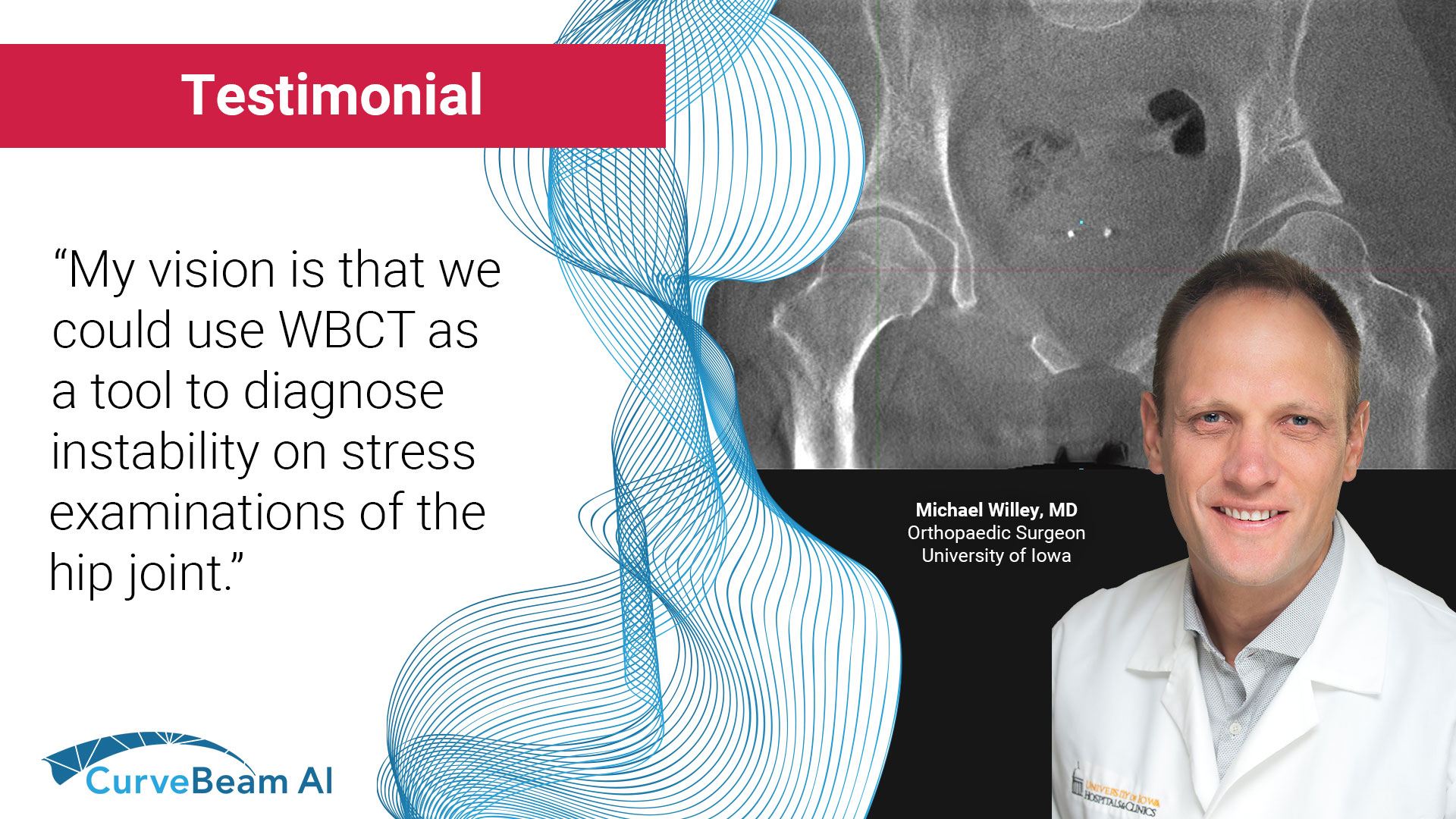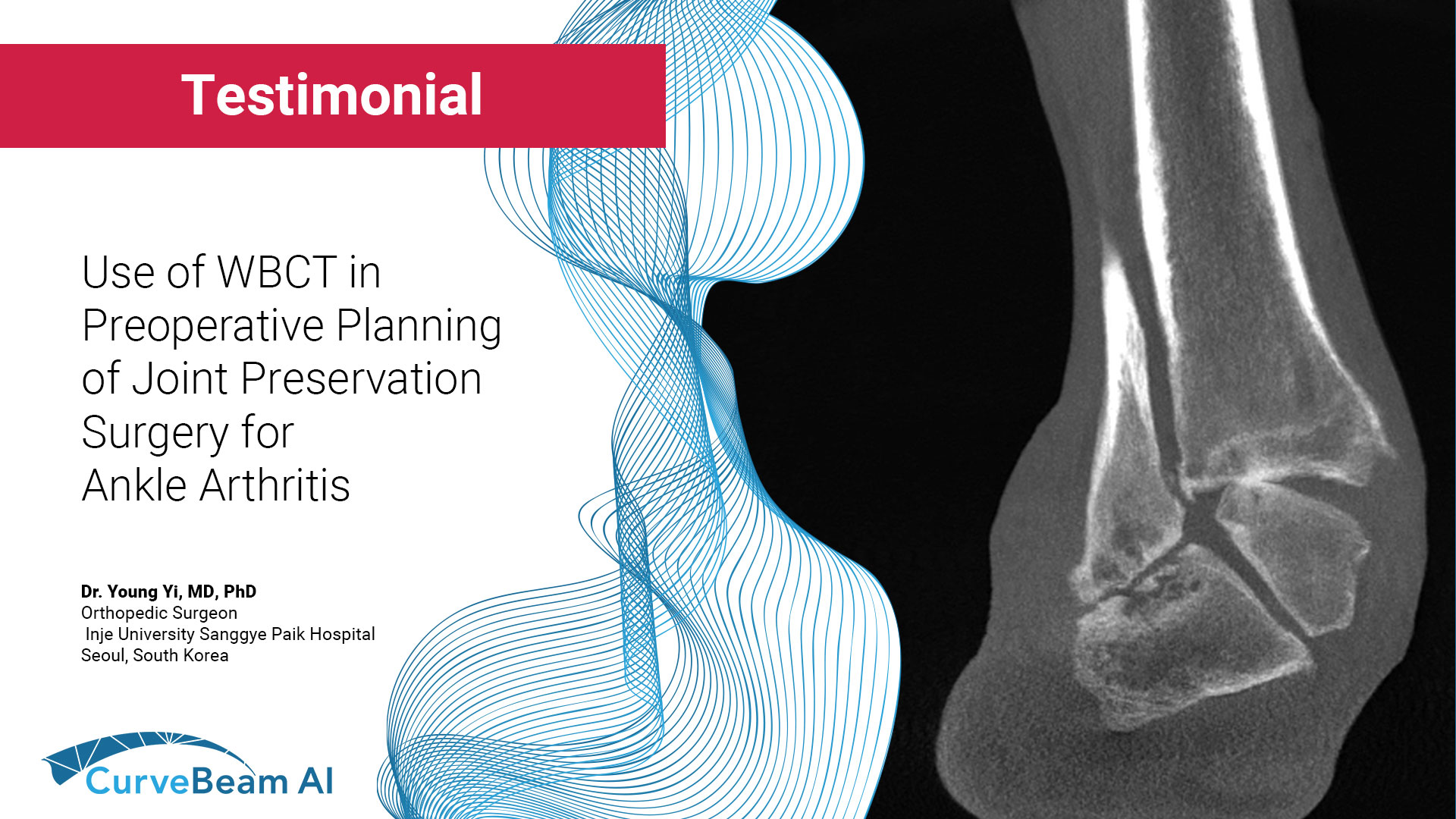At the 2025 American Alliance of Orthopedic Executives (AAOE) Annual Conference in Atlanta, CurveBeam AI…

Measuring Hip Instability in Dysplastic Patients with WBCT
Hip dysplasia is a complex deformity of the acetabulum and femoral head that results in instability and overloading at the edge of the acetabulum. Weight bearing CT is a technique that provides detailed 3D information of the hip in functional standing or stressed positions.
In this video, Michael Willey, MD, orthopedic surgeon at the University of Iowa, explains that WBCT could be a diagnostic tool for patients with borderline hip dysplasia to help differentiate between instability and impingement. WBCT may be able to visualize changes in measures of hip instability not detected by supine views1.
In Dr. Markus Walther’s, MD practice, the “HiRise has more or less completely replaced the CT scan because of the lower radiation, which is always a big issue in those young patients.”
(1)Kevin Dibbern et al. Weightbearing CT and Stress Imaging in the Evaluation of Surgically Indicated Hip dysplasia. Poster presented at: Orthopaedic Research Study 2022 Annual Meeting; February 4 2022; Tampa, Florida.




